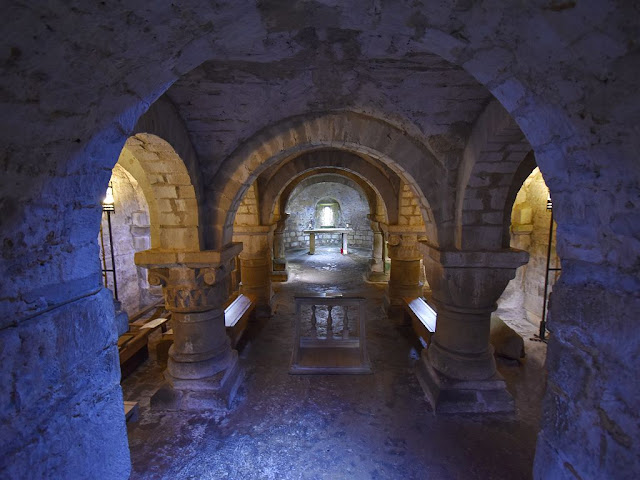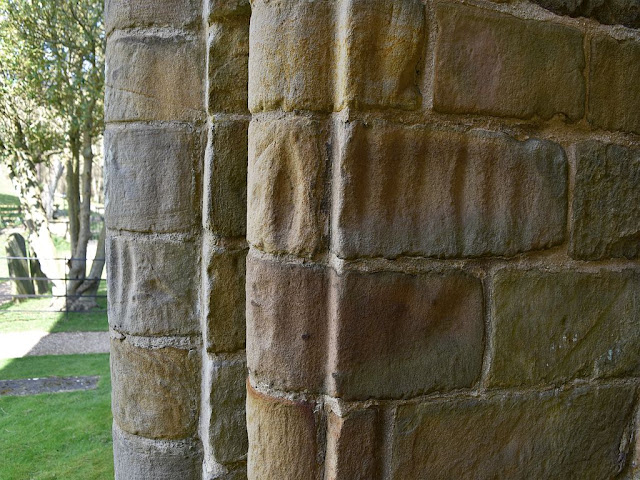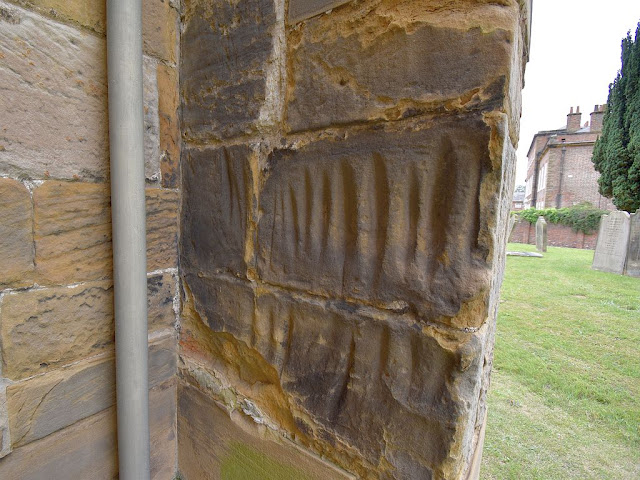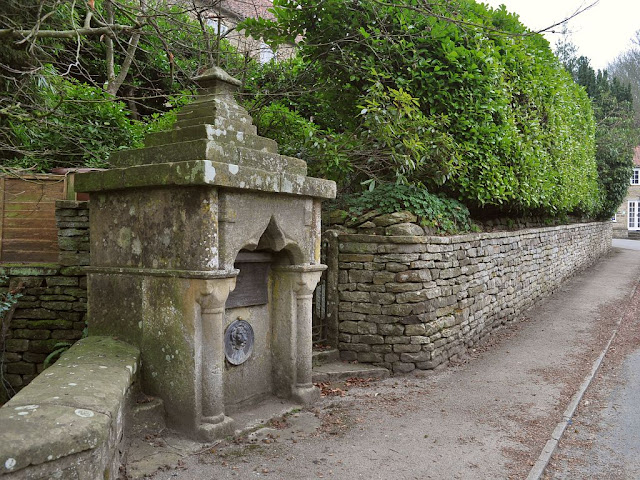The village of Lastingham is located on the southern edge of the North
York Moors - 18 miles to the west of Scarborough.
Lastingham is the site of an early Celtic monastery established in the 7th century by monks from Lindisfarne. At that time the area was quite wild and remote, providing the isolation required for a spiritual life away from worldly temptations. The monastery remained an important religious site through the Anglo Scandinavian period, with the monastic church rebuilt and extended several times to form the church we see today.
Lastingham is one of the few churches in the country to have a subterranean crypt, which can now be accessed by steps descending from the church above. This crypt dates to just after the Norman conquest, and was built on the site of an earlier church and burial place of Saint Cedd - the founding monk from Lindisfarne.

|
|
Lastingham Crypt below the church |
The crypt also contains carved stonework and parts of ancient crosses from the earlier monastery and church. Many visitors find the crypt to be an especially holy place - peaceful and atmospheric.
Being an ancient holy site might help explain some curious marks to be found on the outside wall of the church, on its the north west corner.

|
|
Scrape marks on church wall - Lastingham |
A series of short vertical grooves have been scraped into the stonework,
possibly using a spoon or similar. These kind of scrape marks occur on other
medieval churches, and in some cases they appear to have been created using a
sharper object such as a knife or nail. This has led to local stories of
Cromwell's soldiers sharpening their weapons on the walls, or firing bullets
at the church, leaving marks in the stonework. At other churches the grooved
blocks are called Arrow Stones, and are said to be where arrows were sharpened
when archery practice was compulsory during the Middle Ages. (See the
Fhithich Website
for an example at All Saints Church at Great Ayton)
Although these local explanations are often well established, they do not bear close scrutiny, and it is now thought that these kind of marks are the result of stone dust being scraped from the church walls. In the UK and Europe there are records of people scraping stone dust from church walls for use in folk medicines to treat both people and livestock. As a holy site, the fabric of a church was regarded as sacred and blessed, and therefore had the power to heal. The same belief can be seen at holy wells, where the waters were blessed by a saint long ago, and were then regarded as having healing properties.

|
| Another example of scrape marks - St. Mary's Church, Thirsk |
Arrow Stones?
In medieval times it was firmly believed that unexplained illnesses were
often the result of being 'Elf shot'. The elves or faerie folk were thought to
live unseen along side humans, and when they were insulted or angered they
would fire arrows into a person or livestock, causing sickness and disease.
Preserved examples of Elf Shot or 'Fairy Darts' have shown that they were
actually prehistoric flint arrowheads, and there is a strange kind of logic to
this, as the fairy folk were believed to hate iron, and so they would have to
use stone tools and weapons.

|
|
Lastingham marks (illuminated) |
There are also records of healers using flint arrow heads to treat sick people and animals. The arrow head was placed in water for a while to let the water absorb its 'power', then the sick person drank the water, or the affected part was bathed with it. The belief seems to have been that the type of object that caused the illness (the Elf Shot) could also heal it. These ' medicinal' arrow heads may be at the root of the stories of arrows being sharpened on church walls. The scraping may have been thought to imbue the arrow head with some of the churches sanctity, and at the same time collecting the holy stone dust to be mixed with the medicine. The church authorities would probably not approve of these kind of superstitious practices, so the tales of archery practice may have arisen as a kind of cover story to explain the marks.
The fairy folk's hatred of iron might also explain the grooves at churches which appear to have been made using metal objects such as knives, spoons, or nails etc. Using an iron tool to scrape the stone dust from the church wall would give added potency to the dust which was used to treat any illness believed to be the result of fairy magic.
At Stonehenge, scrapings from the stones were believed to have healing
powers, and in other parts of the world there are records of stone dust being
scraped from sacred rocks, and ingested as a cure for illness or infertility.
So this medicinal use of stones at sacred sites would seem to be a widespread
and ancient practice.
After Notes
There are 3 holy wells in Lastingham village, but these are now dry, and
appear to have been built in the late 1800's with stone work brought from
Rosedale Abbey. It is likely that they were constructed to celebrate the long
Christian history of the village.

|
| Saint Cedd's Well - Lastingham |


Post a Comment